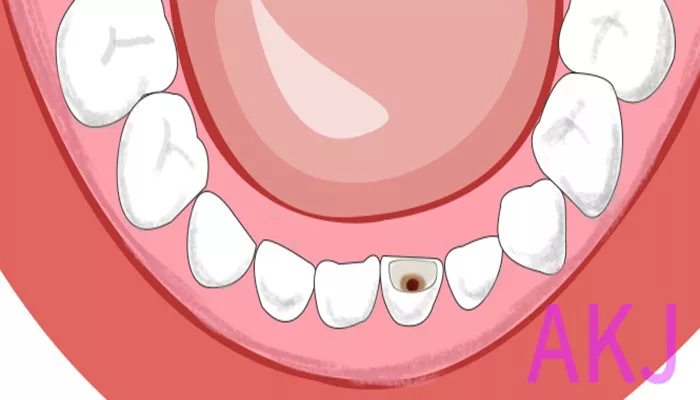Dental cavities, also known as caries or tooth decay, are one of the most common dental problems affecting people of all ages. They occur when the hard surface of the teeth is damaged by acids produced by bacteria that feed on sugars in our diet. Many people wonder if it is acceptable to leave a cavity untreated, either due to cost, fear of dental procedures, or a belief that it is not urgent. This essay will explore the implications of leaving a cavity untreated, the potential consequences, and the importance of seeking timely dental care.
Understanding Cavities
What Are Cavities?
Cavities are small holes or openings that form in the hard surface of teeth due to decay. They can occur on any tooth, including molars, premolars, canines, and incisors. Cavities develop in stages:
Demineralization: The process begins when acids produced by bacteria in dental plaque start to demineralize the enamel, the outermost layer of the tooth.
Enamel Decay: If the demineralization continues, the enamel breaks down, leading to the formation of a cavity.
Dentin Involvement: Once the cavity reaches the dentin, the softer layer beneath the enamel, the decay can progress more rapidly, causing pain and sensitivity.
Pulp Damage: If left untreated, the decay can reach the pulp, the innermost part of the tooth containing nerves and blood vessels, leading to severe pain and infection.
Causes of Cavities
Several factors contribute to the formation of cavities, including:
Poor Oral Hygiene: Inadequate brushing and flossing allow plaque to build up on teeth.
Diet: A diet high in sugary and acidic foods can increase the risk of cavities.
Dry Mouth: Reduced saliva flow can lead to an increased risk of decay, as saliva helps neutralize acids and wash away food particles.
Fluoride Deficiency: Fluoride helps strengthen tooth enamel, and a lack of it can increase the risk of cavities.
Tooth Anatomy: Some people have grooves and pits in their teeth that are more prone to decay.
Is It Okay to Leave A Cavity?
Leaving a cavity untreated is not advisable, as it can lead to a series of serious dental issues. Here’s a detailed overview of the implications.
Progression of Decay
One of the most significant risks of leaving a cavity untreated is the potential for decay to progress. Initially, a cavity may not cause any symptoms. However, as the decay worsens, it can lead to:
Increased Pain: The cavity can cause tooth sensitivity to hot, cold, or sweet foods. As the decay reaches the dentin and pulp, the pain may become more severe.
Infection: If the cavity penetrates the pulp, it can lead to an abscess, a painful infection that can cause swelling and fever.
An abscess may require more extensive treatment, such as root canal therapy or tooth extraction.
Tooth Loss
Leaving a cavity untreated can ultimately lead to tooth loss. If the decay is extensive and the tooth structure is compromised, the tooth may become too weak to function properly. In some cases, the only solution may be to extract the tooth. Losing a tooth can have several consequences:
Aesthetic Concerns: Missing teeth can affect a person’s smile and self-esteem.
Functional Issues: Losing a tooth can make it difficult to chew and speak properly.
Shifting Teeth: Adjacent teeth may shift into the space left by a missing tooth, leading to alignment issues and further dental problems.
Impact on Overall Health
Oral health is closely linked to overall health. Untreated cavities and dental infections can lead to systemic health issues, including:
Heart Disease: There is evidence to suggest that oral infections can increase the risk of heart disease and other cardiovascular problems.
Diabetes Complications: Poor oral health can make it more challenging to control blood sugar levels in individuals with diabetes.
Respiratory Issues: Bacteria from the mouth can be inhaled into the lungs, potentially leading to respiratory infections.
Treatment Options for Cavities
Professional Dental Care
If you have a cavity, it is essential to seek professional dental care. Dentists have various treatment options available, depending on the severity of the decay:
Fluoride Treatments: For very early-stage cavities, fluoride treatments can help remineralize the enamel and reverse the decay process.
Fillings: If the cavity has progressed beyond the enamel, the dentist will remove the decayed portion of the tooth and fill it with materials such as composite resin, amalgam, or gold.
Crowns: For more extensive decay, a crown may be necessary to restore the tooth’s shape and function.
Root Canal Therapy: If the decay has reached the pulp, a root canal may be needed to remove the infected tissue and seal the tooth.
Extraction: In cases where the tooth is too damaged to save, extraction may be the only option.
Preventive Measures
Preventing cavities is always better than treating them. Here are some effective preventive measures:
Regular Dental Check-ups: Visiting the dentist every six months for check-ups and cleanings can help catch cavities early.
Good Oral Hygiene: Brushing twice a day with fluoride toothpaste and flossing daily can help remove plaque and prevent cavities.
Healthy Diet: Limiting sugary and acidic foods and drinks can reduce the risk of cavities.
Fluoride Use: Using fluoride mouthwash or receiving fluoride treatments from your dentist can strengthen tooth enamel.
Dental Sealants: Applying sealants to the chewing surfaces of molars can provide an extra layer of protection against cavities.
Conclusion
Leaving a cavity untreated is not advisable. While it may seem convenient to postpone treatment, the risks far outweigh the temporary relief. Untreated cavities can progress, leading to increased pain, infection, tooth loss, and potential systemic health issues. Seeking timely dental care is crucial for managing cavities effectively and maintaining overall oral health. By understanding the importance of addressing cavities promptly, individuals can take proactive steps to preserve their teeth and enjoy a healthy smile for years to come. Remember, prevention is key, and maintaining good oral hygiene, along with regular dental visits, can significantly reduce the risk of cavities and their associated complications.
Related topics:

